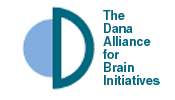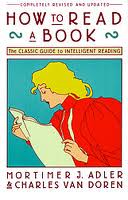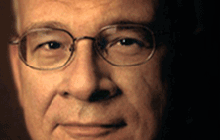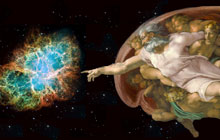“Logic is the anatomy of thought.” – Locke
The art of clear thinking is becoming less and less common. In part, this is because schools have stopped focusing on teaching students how to think. Instead, they stress the importance of learning facts and having experiences. The following course experience seeks to help you learn to think clearly about any subject. Thinking is not hard. In fact, it can probably be reduced to three basic actions, in much the same way as Aristotle broke it down 2,500 years ago. Thinking involves:
A. Coming to terms
B. Making judgments
C. Connecting the dots
We all do each of these simple acts. The question is how well we do them. Think of these as tools in your kit of critical thinking. Learning to use the tools well and making sure they are of the highest quality will serve you well in whatever future you pursue. Good thinking is never a bad thing.
The focus of this chapter is to set up what follows: mostly practical exercises and activities to help you become a better thinker. Each of the three acts of clear thinking can be put in the form of a question. Asking questions is the surest way to think more clearly, whether you are asking yourself or others. But good thinking always begins with terms, so let’s come to terms.
Definition is the first act of good thinking. Variations of the question “What do you mean by that?” are the best way to approach this first act. We all think using “concepts.” When two people seek to communicate about something, they have to agree upon a common term using their respective concepts. This act of coming to a term with someone else is the act of definition. Whether we are talking with someone, writing, or reading, we have to define our terms before any clear thinking can occur. Consider the following examples.
You say to your friend, “That is a beautiful black coat you have on.” She looks back at you in a confused manner and says, “Black? This is blue.” Who is right? You are both looking at the same coat, which we assume is not changing colors, and therefore you should not be having this problem. But your concept of black matches your perception of that coat, while hers does not. At times you may not be able to arrive at agreement.
Or what if you are riding in a car with your friend, and as you approach a traffic light, it turns yellow. His concept of a yellow light causes him to stomp on the gas to clear the intersection before it turns red. You have been taught that once the light turns yellow, you should be safe, come to a stop, and wait for the green light. You will probably hold your breath all the way through the intersection due to a differing definition of what yellow should mean.
We will further examine this act of defining as we go along, because there are a number of ways to come to terms. But before you can think clearly, you have to know what the words mean.
The second act of clear thinking is connecting two terms to make a judgment. Ask the question, “How do you know that?” Everything we learn is based upon what we already know. High-level thinking occurs in the second act when we connect two terms, either by affirming or negating the first term with the second. Now you see why definition is so important. You can’t make a judgment about terms you do not understand. Again, perhaps an example will help make this clear.
Bill is a man.
A horse is not a dog.
A certain individual named Bill is affirmed to be a man. The subject, Bill, is connected to the predicate, man. If we know who Bill is, then we can know he is a man, because most of us share a clear understanding of what a man is. In the second statement, because we all know the differences between a dog and horse, we can clearly state that a horse is not a dog. The subject, horse, is not connected in our minds to the predicate, dog. While this may seem obvious, simple statements like the ones above are not what challenge us. When things get complicated, the actions of our mind stay the same. Once we have two terms (using the act of definition) we can connect those (using the act of judgment).
The third act of clear thinking is deducing an inference, or connecting the dots. This expands on the second act and asks the question, “What are your assumptions?” To connect the dots, we need two statements, often called premises. Just like we connect two terms in act two, in act three we connect two statements to arrive at a third statement, our conclusion. If both premises are true, and if both premises are correctly combined to produce our conclusion, then we have achieved sound or clear thinking. Consider this example.
Premise 1 — Bill is a man.
Premise 2 — All men love pizza.
Conclusion —Therefore, Bill loves pizza.
The first statement is from our example in act two. All we have done is add a second set of connected terms: men (same as in the first statement, only plural) and pizza. Because “man” occurs in both premises, it joins our two other terms together in our conclusion. IF Bill is a man, and all men do indeed love pizza, THEN Bill (being a man) must love pizza (which all men love). Before you bring up your objection, let me answer it. The premises must be true if we wish to arrive at truth, but the conclusion can be valid (or clear) even if one (or both) premises is not true. Here, our second premise is not necessarily true. There may be one man, somewhere, who hates pizza. That would make our second premise untrue, and thereby call into question our conclusion. However, because the thinking is clear, the error is clear as well.
So clear thinking is not always “right” thinking, but any errors should be clearly revealed, not hidden. Clear thinking has to have clear terms, statements, and premises to arrive at a clear conclusion. So often in our daily speech, one or more of our premises are assumed but not stated. The clear thinker is always seeking to find the hidden or assumed premise so he can determine if the speaker or writer he is communicating with has drawn valid conclusions. This is hard work, but it is how clear thinking is done.
The following chart should help summarize this session for you:
|
The Act |
The “Product” |
The Question |
| First – Coming to Terms | A defined “term.” | What do you mean by that? |
| Second – Making judgments | A statement (one sentence) of two connected terms. | How do you know that? |
| Third – Deduced inference or connected dots | Two premises and a conclusion (three sentences). | What are your assumptions? |
The rest of the course is designed to help you train your mind to accomplish these three acts. We will cover the following sections in the coming chapters:
- Activities that Help You Build a Better Mind
- Ways to Train Your Mind Muscle
- How to Use Your Mind Creatively
- Things that Help Your Mind
- Sharing Your Mind with Others
Version 1.3












